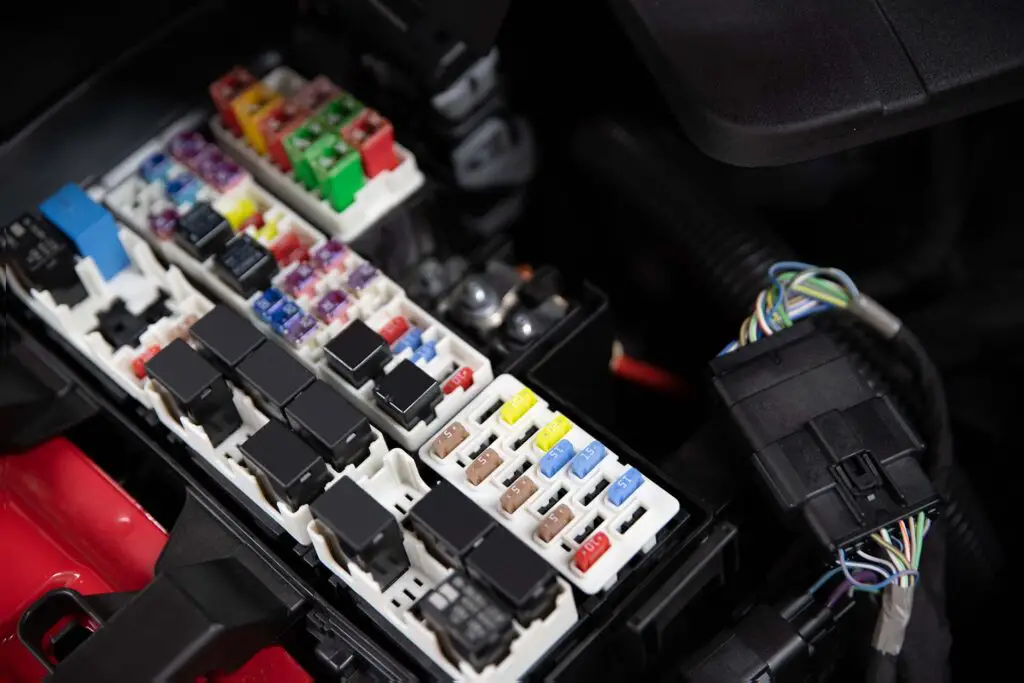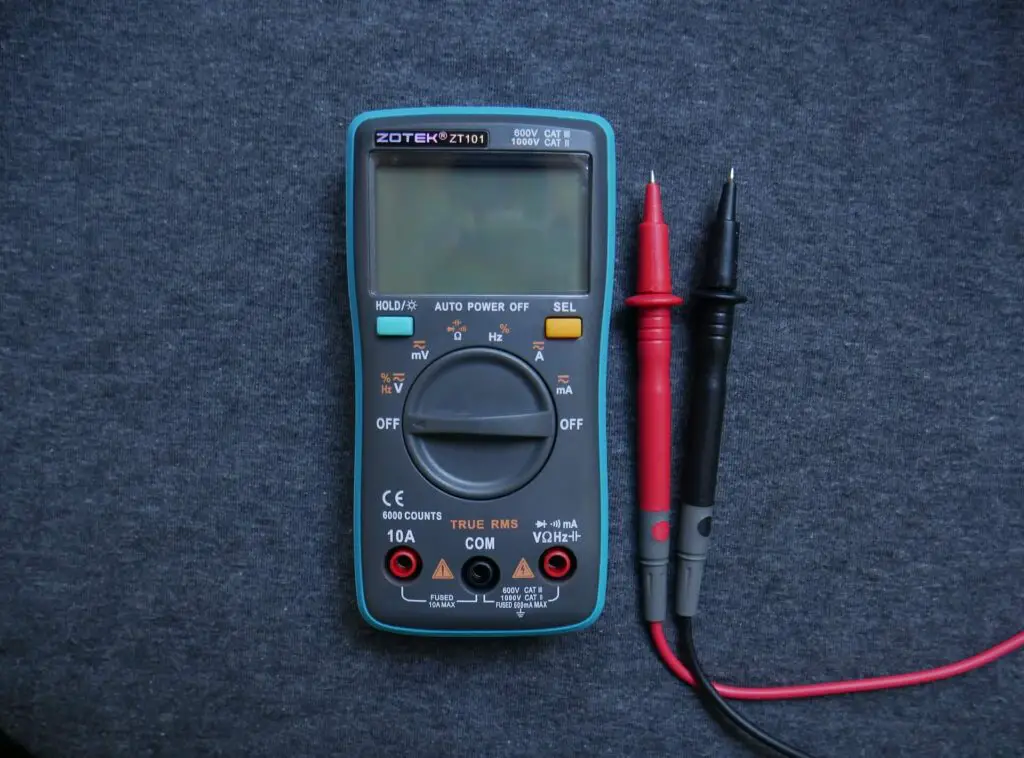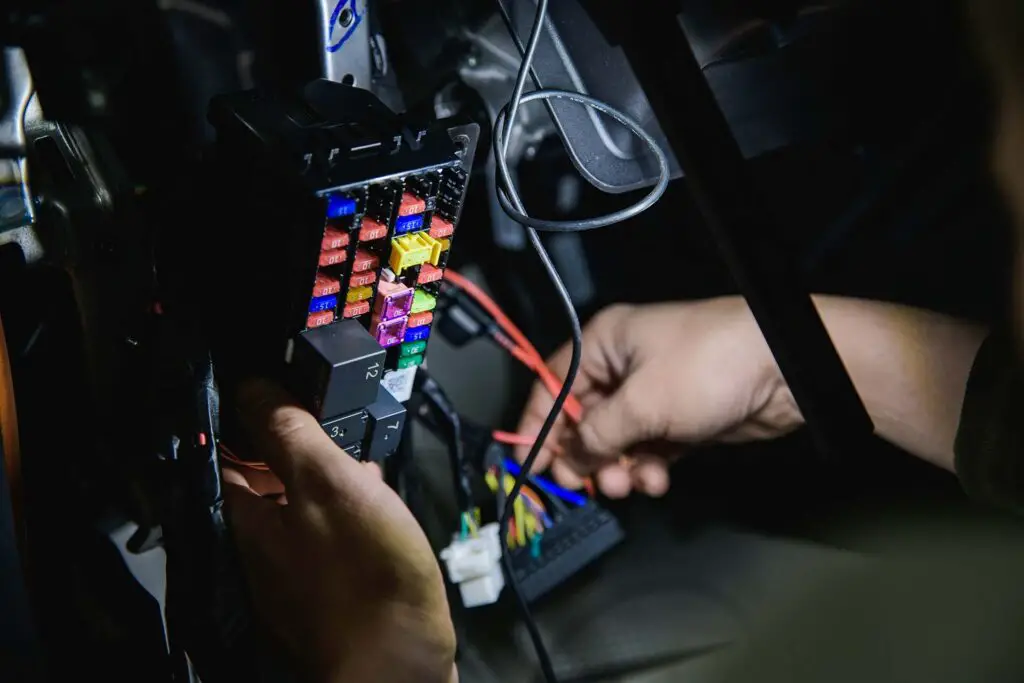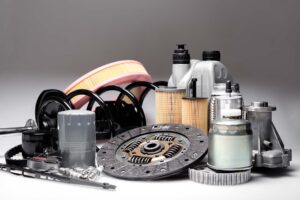Just like the fuses in your home’s electrical box, the ones in your four-wheeler play a crucial role in ensuring everything runs smoothly. When faced with electrical hiccups, knowing how to tell if a car fuse is blown becomes crucial. So, if you’ve ever wondered why a particular feature in your vehicle suddenly stopped working, let’s explore the telltale signs and get you back on track.
Detecting if this electrical safety component is blown is a pretty straightforward process. It consists of removing and inspecting it, as well as double-checking the issue with a multimeter. It’s pivotal to replace any damaged parts with the correct ratings and undertake preventive measures, ensuring smooth rides and guarding against potential electrical hazards.
What Is a Car Fuse and Why Is It Important?
Acting as the guardians of your vehicle’s electrical network, these tiny components bear significant responsibility. Their primary role is to protect the intricate maze of circuits and wiring from potential overloads or short circuits.
When too much current flows, these components act as safety devices willing to sacrifice themselves, blowing to prevent potential damage to other, often more expensive, components. Think of them as the unsung heroes, silently keeping everything from your headlights to your radio in harmonious operation.

Common Signs and Symptoms of a Blown Fuse
Just like a detective searching for clues, identifying a blown safety component in your vehicle’s electrical system requires keen observation. Often, the signs are subtle but tell a clear story to those who know where to look.
Here are the most common symptoms:
- Specific electrical components not working – if you notice that certain parts, such as the radio, headlights, or power windows, aren’t functioning while everything else seems fine, a compromised fuse might be the culprit,
- An unusual burning smell inside the vehicle – if there’s a faint odor resembling burnt plastic or electrical insulation, it can point towards an overload situation where the protective component has done its job and sacrificed itself to save the circuitry,
- Warning lights on the dashboard – when something goes amiss, these systems often flash a warning light or message on the dashboard, alerting the driver to potential issues.

How to Tell if a Car Fuse Is Blown – Inspection Steps
If you’ve ever pondered how to check a car fuse, you’re certainly not alone. Identifying a compromised electrical safety device might seem complicated. However, with a systematic approach, it becomes a simple task.
Don’t Forget – Safety First
Before embarking on any vehicle-related inspection, safety must be the foremost priority. Begin by disconnecting the car battery and ensuring that the ignition is turned off. This ensures you’re not at risk of any electrical mishaps.
Beyond these initial precautions, the tools you opt for also play a crucial role in safety. Using the right gear can not only prevent accidental harm but also help in accurate inspection and identification of the underlying issues. Here’s what you might need:
| Fuse puller or needle-nose pliers | For extracting the fuses safely and effectively |
| Multimeter | For checking the functionality of the protective device |
| Flashlight | To illuminate dark or shadowed areas |
| Replacement fuses | To replace a blown component immediately |
| Small flathead screwdriver | To assist in removing a stubborn safety device |
Locate the Fuse Box
Before any examination can begin, it’s essential to find the fuse’s housing. Often located under the hood or nestled behind the dashboard. Its exact location can vary based on the vehicle’s make and model. So, when in doubt, always refer to the owner’s manual for precise guidance.
Remove and Inspect the Fuse
Once you’ve located it, you’re probably wondering how to remove the fuse from the car. With the right tools, it’s a simple task. Using a puller or a needle-nose plier, grip the device and gently pull it out for inspection.
For clear and transparent pieces, direct your attention to the metal wire inside. If it’s broken or appears burnt, you’ve likely found the problem. On the other hand, if you’re dealing with ceramic devices, inspect for any signs of scorching, cracks, or other visible damage.
Use a Multimeter for a More Accurate Diagnosis
To make sure your assessment is spot-on, a multimeter is your best friend. Set it to continuity mode and touch the probes to each end of the protective device. If there’s no continuity, meaning the multimeter doesn’t provide a reading, it’s a clear sign that the piece in question has been compromised and needs replacement.

Common Causes of Blown Fuses
Now that we’re familiar with the consequences and methods of handling a compromised electrical safety device, it’s time to look deeper into what brings about these issues in the first place. A proper understanding of the causes can help in preemptive action, ensuring smoother vehicle operations.
Overloading of the Electrical Circuit
When too much current flows through a circuit, it can lead to overloading. This might be due to adding numerous appliances, malfunctioning components, or even system modifications that weren’t correctly factored in. The protective devices in the circuitry act as gatekeepers, designed to break or “blow” under such conditions.
However, consistent overloading hints at an underlying issue. It may be the result of a deeper electrical problem or bad habits, like constantly plugging in too many devices. It’s crucial not just to replace the safety device but to address the root cause, ensuring the problem doesn’t persist.
Short Circuits
Short circuits are notorious for causing electrical mishaps. When a live wire unexpectedly meets a neutral or ground wire, a sudden and dramatic surge in current occurs. This unexpected jolt can be too much for the protective measures in place, causing them to break in response.
But what leads to a short circuit? Often, it’s wear and tear or accidental damage. Exposed wires, frayed insulation, or even small accidents can lead to wires coming into unintended contact. Being aware of the state of your car’s wiring and taking preventive measures can help mitigate the risks of short circuits.
Age and Wear
Everything has a lifespan, and the protective devices in your vehicle’s electrical system are no different. Over years of diligent service, the internal metal filament can weaken. This wear makes it less resilient, sometimes causing it to break even under regular conditions.
Regular maintenance and checks are crucial. Even if there’s no obvious issue, these safety components can be proactively replaced as part of routine vehicle servicing, ensuring they’re always in optimal condition and ready to protect as intended.
Faulty Appliances or Devices Connected to the Car
External devices connected to a vehicle might seem harmless, but, as already mentioned, they can be culprits, too. Gadgets like chargers, coolers, or even music systems can develop faults over time, drawing excessive current and overwhelming the system’s protective measures.
Being mindful of the accessories and devices you add to your four-wheeler is vital. Opting for quality products, ensuring they’re compatible with your vehicle, and regularly checking them for wear or damage can help ensure they don’t become a source of electrical strain.
What to Do if You Find a Blown Fuse?
Discovering a compromised electrical safeguard can be concerning, but the solution is often straightforward – replace it with the correct counterpart. However, ensuring you use the right replacement is vital for the continued safety of your vehicle’s electrical system.
Make Sure to Match the Ratings
One of the most crucial aspects of this process is ensuring that the replacement’s ratings align perfectly with the original. These ratings are in place to ensure that each safeguard can handle the specific electrical flow of its circuit. Using an incorrect rating can either lead to premature breaks or, worse, fail to provide the needed protection.
Further, it’s tempting, albeit misguided, to use alternatives like metal wires or foil as a makeshift solution. These can lead to more significant issues, including potential fires or damage to the electrical system. If you ever find yourself uncertain about the replacement process or what to use, it’s always best to turn to professionals – their expertise can provide the assurance of a job well done.

What Are the Preventive Measures?
Electrical mishaps in vehicles can lead to frustrating consequences and sometimes expensive repairs. Taking some proactive steps can help reduce the likelihood of these issues, ensuring the smooth functioning of your car’s electrical system.
Here are some preventive measures to consider:
- Regular check-ups – a routine check can catch potential problems early on, making sure everything runs smoothly,
- Avoid overloading circuits – don’t use multiple power-intensive devices at the same time,
- Replace old components – even if they haven’t shown signs of malfunction, it’s always better to replace old devices and be ahead of potential problems,
- Keep the vehicle dry – avoid water exposure, as moisture can cause shorts or other electrical issues,
- Regularly inspect wiring – addressing minor issues early on can prevent more significant problems down the line, so regularly check the wiring for wear or damage.

Wrapping Things Up with Electrical Wisdom
In the grand adventure of vehicle ownership, it’s essential not to overlook the little things that keep our rides running smoothly. Addressing any electrical hiccups early on can save a heap of trouble down the line. And at the heart of it all – safety first and always. Here’s to many more miles of glitch-free driving!
FAQs
What Happens if I Use the Wrong Fuse Rating?
Using an incorrect rating can compromise your vehicle’s electrical safety. An under-rated component might break prematurely, while an overrated one might not offer the required protection, potentially risking damage to the electrical system or even a fire.
Can a Blown Fuse Drain the Car Battery?
While the component itself won’t directly drain your battery, the underlying electrical problem causing it to blow might. For instance, a short circuit can create a continuous draw, leading to battery depletion.
Why Does My Fuse Keep Blowing?
If you’re experiencing repeated breaks, there’s likely an underlying issue in the electrical system. Common culprits include faulty wiring, malfunctioning components, or overloading of the respective circuit. It’s crucial to identify and address the root cause for safety and functionality.
How Can I Determine the Correct Rating for Replacement?
The right rating is usually indicated in your vehicle’s manual or on the panel of the electrical protection box. If unsure, consult a professional to avoid mismatching and the risks it poses.
Does Every Vehicle Have the Same Type of Electrical Protector?
While most vehicles employ similar protection mechanisms for their electrical systems, the specific type and rating can vary based on the make, model, and year of the vehicle. Always reference your car’s manual or seek expert advice when unsure.








